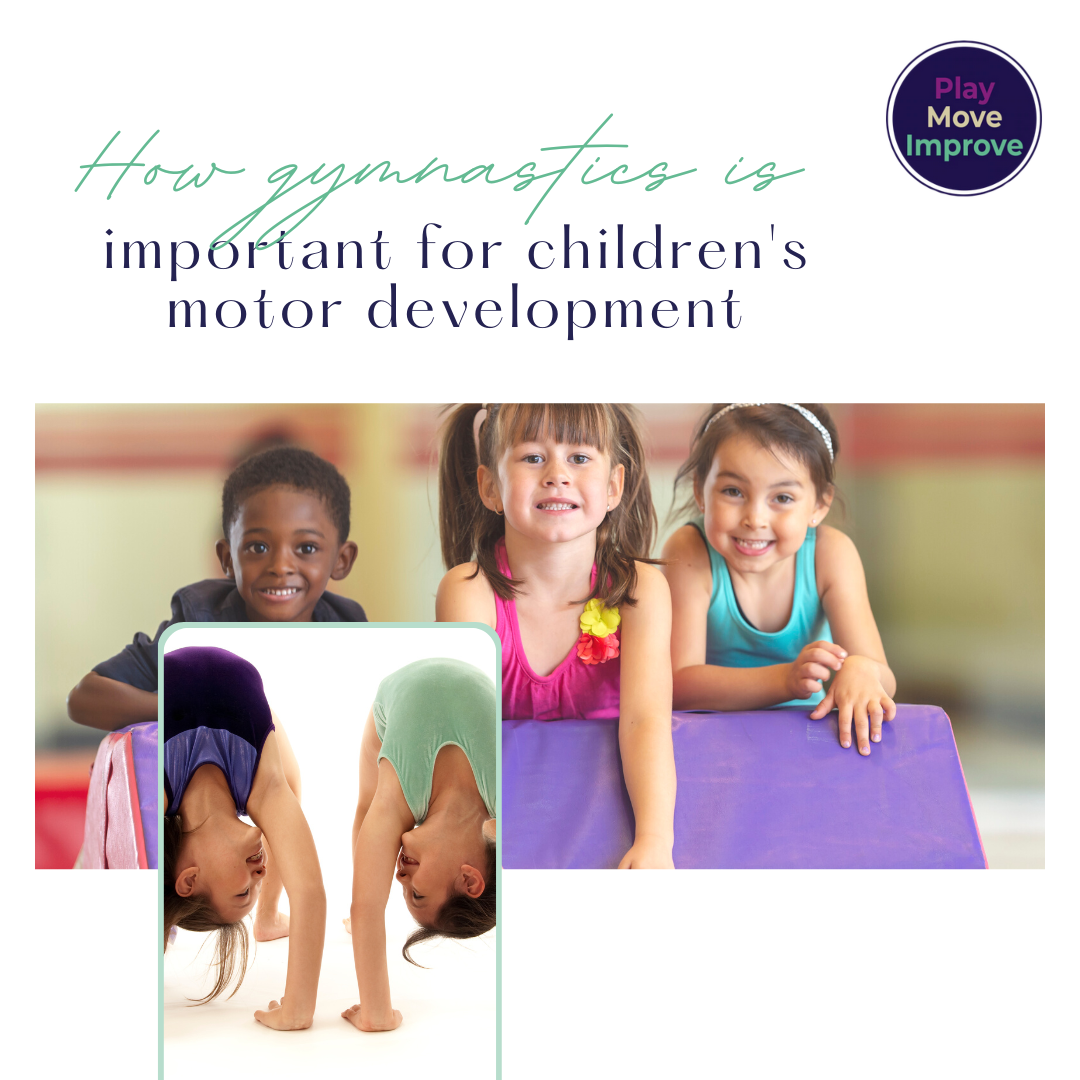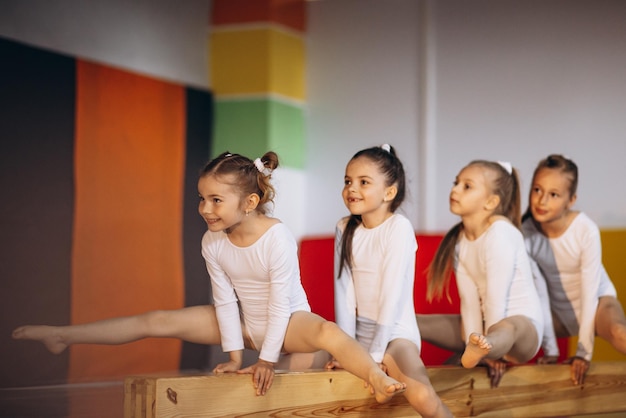
Why gymnastics is important for children's motor skill development
Share
My son started kinder gym at the age of 4 years because he was having difficulties with his gross motor milestones and fundamental movement skills, and was no longer interested in his mum being his physical therapist!
The kinder gym coaches were AMAZING! They got Hugh to work on clinical skills that I could never motivate him to do. Because the classes were so much fun and structured in a way that encouraged all children to have a try, Hugh was leaping into the foam pit, jumping with both feet continuously down the trampoline, balancing with one foot in front of the other on the beam.
It was incredible to watch as a paediatric Exercise Physiologist and as a mum, because I could see how much stronger and more coordinated he was becoming.
We continued gymnastics for a few years, until Hugh built up the fundamental movement skills that were his goal for starting basketball with his friends. Our deal together was that he continued with his gymnastics each week until he was able to coordinate his balance and core strength to the point of being able to keep up on the basketball court. He wanted to play basketball for so long, and it was thanks to gymnastics that it was possible for him.
My role now is helping gymnastics coaches all around the world plan their toddler and kinder gym lessons, and build up their motor development knowledge to support children like Hugh who are finding motor skill development a challenge.
In this handout you can read about the many motor skill benefits that gymnastics provide for children
I will briefly explain these motor skills below.
Gymnastics helps children to develop:
All areas of balance
There are 4 types of balance.
- Static
- Dynamic
- Proactive
- Reactive
Static balance refers to being able to stay upright without falling over when balancing still (holding a pose for 5 seconds or longer), while dynamic balance refers to being able to stay upright without falling over when moving (walking along a balance beam).
We need static balance and dynamic balance when learning how to throw and catch a ball, walk across stepping stones in the playground, balance across bridges at the park.

The other two areas of balance are called proactive and reactive. It is these two areas of balance that children with dyspraxia find challenging. Proactive balance means that you need to prepare for losing your balance. For example, when I am about to take a step forward on the beam, I need to turn on my core strength, knee and ankle muscles in preparation for moving my body forward on the beam. If I don't prepare and be proactive with my balance, I will fall off of the beam.
In May I have a gymnastics and motor skills workshop in Sydney that is available as a face to face and live stream session - https://www.playmoveimprove.com.au/products/how-gymnastics-is-important-for-childrens-motor-skills-workshop-nsw-2023
Reactive balance was the reason why I didn't let Hugh play basketball until he had mastered his balance. Because reactive balance is the process where I start to lose my balance, or my body weight moves to the front, back or sides, and I need to quickly react to this sudden change in my body position so I don't completely fall over.
Children who start ball sports before they have their proactive and reactive balance working efficiently, may become nervous playing sport because their body isn't keeping them upright properly, and their chance of tripping or falling on the court is higher, which can be scary and as a pre-teen for Hugh it was embarrassing.
Gymnastics challenges and improves balance in many of the warm up, group drills, and apparatus work. Hence why Hugh started gymnastics in kindergarten.
Learn more about children's balance skills in this podcast episode - https://spotifyanchor-web.app.link/e/Fi2XH6Ykzwb
Core strength
Core strength for children's motor development is about being able to:
Gymnastics requires core strength in many of the class activities because you're moving your head, arms, legs and torso in positions that take your centre of gravity over your base of support, needing your core muscles to switch on and keep your torso stable so you don't tip too far forward, backward, left or right.
Even being able to walk along a beam uses your core strength muscles because if you haven't activated and switched on the muscles in your adbominals, lower back, gluteals and hips, then you'll fall off of the beam like a pancake.
Learn more about core strength here - https://spotifyanchor-web.app.link/e/etuYy1Imzwb
Vestibular movement
The vestibular system is located in your inner ear and is responsible for telling your brain that your head position has moved.
If you have experienced vertigo or sea sickness before, you will know what it feels like to have your vestibular system not working properly.
This area of development has been Hugh's greatest challenge, and I am seeing an increasing number of children with poor vestibular function for their age since the introduction of technology where children are spending hours with their head still, staring at screens.
Learn more in May - https://www.playmoveimprove.com.au/products/how-gymnastics-is-important-for-childrens-motor-skills-workshop-nsw-2023
Basically, when we do forward tumbles, bridges, and spinning movements, the vestibular system receives increased sensory information from the head being moved.
The vestibular system then sends this sensory information to the brain, telling the brain the speed and direction that the head is moving. The brain then talks to the muscles, ligaments and tendons, telling them to activate or relax, depending on which muscles, ligaments and tendons they are, and making sure that we we move our head, we stay upright and don't lose our balance.
The challenge with children today, is that they're not moving their head as much. So when they go to move their head quickly when pencil rolling, tumbling, spinning, etc. they may experience dizziness which puts them off moving their head.
However, if they avoid moving their head at this age, I feel concerned for how their vestibular system will be working when they're in their 60s, 70s, and 80s...
Learn more about the vestibular system here - https://spotifyanchor-web.app.link/e/XkpCCO7mzwb
Please share this article, and download the gymnastics motor development handout to help raise awareness about the importance of gymnastics and movement for children.




